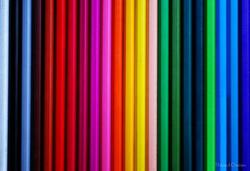There has been so much violence lately that it is hard to capture in a sentence or two (or three). From the shootings at the practice field for the Congressional baseball games to the rampages in London, most recently outside a Mosque, to the killings in our streets, both adults and children are exposed to violence. And, the media captures this violence -- and repeats it at all hours of the day and night. The images of violence -- and the reality of violence -- affects us.
Surely, all this violence, whether near or far, creates tension and anxiety. And for some, it provides triggers related to violence in the past, exacerbating the situation. For some, it is a reminder that our world is not a safe place and we need to be vigilant -- but even vigilance will not curb the presence of or protection from violence.
It is in this context that I participated in a remarkable event at the Edward M. Kennedy Institute on Art & Activism. The point of the program was to demonstrate how art can empower individuals -- most especially young people -- to respond to violence and how those artistic responses are beneficial. The panel reflected what is a reality: art has been for centuries a pathway for expression and it has the capacity to improve the lives of those who both make and see the art created. How important is that?
https://www.emkinstitute.org/e...vism-civicengagement
But, I want to get more specific and share some of the data on the ability of art to improve the lives of young people who are in the midst of violence and trauma. And, there is a growing literature on this. In short, I want to focus on what I will call "protest art."
Start with this reality: for years, psychotherapists have used art therapy with young children. Art enables them to express what they cannot express verbally. And, interpretation of child art has enabled skills therapists to understand better the inner lives of children. The point here though is the trauma is within the child. For our purposes here, I want to focus on external violence that impacts our world and how art can help us deal with the plethora of trauma and violence we witness day in and day out.
For centuries, protest art has been a way of expressing dissatisfaction with our world. Indeed, as Caroline Kennedy stated so eloquently in her book, A Patriot's Handbook, dissidents are patriots too. Through their songs and poems and art, they demonstrate their commitment to the values we hold dear as a nation.
Recently, we have seen the benefits of what I will term "collective art: -- art in which young people work together to create a response to the violence or trauma of their world. And, the literature on these projects are clear: art enables these young people to find their voice, to develop problem solving skills, to learn workplace skills and to facilitate their continued education. Really. Look at this remarkable and powerful report from the Urban Institute.
http://www.urban.org/sites/def...th-Public-Safety.pdf
But, there is also a new literature on how art (whether doodling or creative expression) promotes wellness. Indeed, art enables both adults and children to activate portions of their brain that are critical to moving forward and processing.
http://www.sciencedirect.com/s...ins-Reward-Pathways/
To be sure, the art in this small study (which needs to be replicated) was not protest art but it raises the possibility that we need to couple the literature on art with the data on collective art engagement. And, in so doing, we can improve the lives of children and adults -- we can improve well-being.
Ironically, we are making cuts in the arts across the nations and not just in schools. Threats to the National Endowment for the Arts are real as are threats to funding arts programming.
Art making -- even collective art making and enhancing experience of place -- is not a panacea. But penned up violence and anger is not a wise state of affairs either. So, until we can create a better world, until we can curb violence, until we can enhance civility and equality and close the equity gaps....until then, art and collective art projects have enormous value.
I encourage schools and businesses and communities to embrace the arts and form art collaboratives and share art on the walls and in the halls. Enable youth and adults to express themselves, to share their vision, to speak up and out. It is not an endpoint but it most assuredly will help rather than hurt. In times like these, we need all the help we can muster.
So, go create -- and find new ways to create in every place you spend time. The value is immeasurable.




Comments (0)